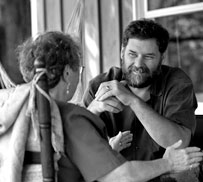![]()
Search
Recent Posts
- ChangingAging.org Redesign -- Please Bookmark!
- Disaster in Buffalo
- Power Up Friday
- Blanchard WinsDays
- Kevin Frick writes...
- Monkhouse Monday
- Getting Closer!
- Blanchard WinsDays
- Power Up Friday
- My Pick for Health and Human Services
- Understanding Health Care Reform
- Facts Are Stubborn Things: Social Security Edition
- Monkhouse Monday
- Localism is Coming
- Krugman Can't Wait...
Recent Comments
Category Archives
- AGING 100
- Aging
- Culture
- Dementia
- Eden Alternative
- Erickson School
- Green House
- Health Policy
- Longevity
- Media
- Rockets
Monthly Archives
- February 2009
- January 2009
- December 2008
- November 2008
- October 2008
- September 2008
- August 2008
- July 2008
- June 2008
- May 2008
- April 2008
- March 2008
- February 2008
- January 2008
- December 2007
- November 2007
- October 2007
- September 2007
- August 2007
 Subscribe to this blog's feed
Subscribe to this blog's feed
Announcements

Blog Data
« Low Road Campaigning | Main | Caring.com: The Interview »
August 2, 2008 |Permalink |Comments (0)
Green House in Alaska
There is a nice article about the new Green Houses in Seward, Alaska
In a plot behind the Seward High School, bulldozers and other machines busily cleared land for the new long-term care center slated to open in the fall of 2009.The facility is part of the Green House Project, an innovative concept that replaces institutionalized elder care with a home-like atmosphere.
It’s the first such project in Alaska and one of only approximately 15 around the country, with another 40 or so in the developmental stages.
“These will be actual homes,” said Valerie Gunchuck, director of nursing at Wesley Rehabilitation and Care Nursing Home in Seward. “There is nothing institutional about them. We don’t even like to use that word.”
The Seward center, modeled after existing Green Houses, will be made up of four homes with a separate administrative building. Each house will contain 10 bedrooms with private baths directly off a centralized area termed the “hearth,” a large communal living room and kitchen which, according to Gunchuck, will look like “any other kitchen and living room in any of a thousand of houses you might enter.”
Houses will have enclosed patio areas and yards, with possible gardens. Pets are optional, depending upon the rules of that particular house.
All 31 Wesley residents will be transitioned to the center. Once situated, they’ll prepare meals together in one large kitchen and eat in a family-styled dining room. They’ll also be encouraged to decorate their bedrooms with furniture from their own home.
“They can do that here of course, but it still looks like a hospital room,” Gunchuck said. “You can only make a hospital room look like a bedroom so much.”
(H/T Alex M)














